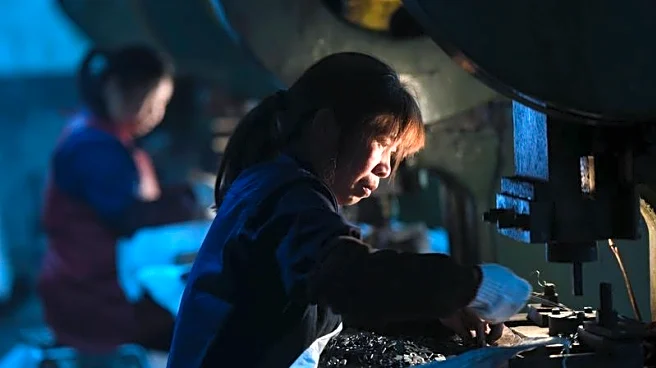What's Happening?
The Institute of Supply Management (ISM) reported that the Manufacturing PMI fell to 48.7% in October, marking the eighth consecutive month of contraction for the U.S. manufacturing sector. This decline
is attributed to a faster rate of contraction compared to September's figure of 49.1%. The production index also fell into contraction territory, while new orders and employment indexes showed slight improvements but remained below the 50% threshold. Six manufacturing industries reported growth, including primary metals and transportation equipment.
Why It's Important?
The continued contraction in the manufacturing sector highlights ongoing challenges faced by U.S. manufacturers, including strained business conditions and tariff impacts. The decline in the PMI indicates potential economic slowdown, affecting employment and production levels. Industries such as food, beverage, and transportation equipment showed resilience, but overall, the sector's performance could influence broader economic indicators and policy decisions. Manufacturers may need to adapt to changing market conditions and explore strategies to mitigate tariff impacts.
What's Next?
Manufacturers are likely to focus on strategies to counteract the effects of tariffs and improve production efficiency. The ISM's upcoming monthly data release will be closely watched for signs of recovery or further contraction. Policymakers and industry leaders may consider measures to support the manufacturing sector, potentially influencing trade policies and economic strategies. Stakeholders will monitor developments to assess the sector's impact on the U.S. economy and employment.
Beyond the Headlines
The contraction in manufacturing raises questions about the long-term sustainability of current trade policies and their impact on U.S. industries. The sector's performance could lead to discussions on reshoring efforts and the need for innovation in manufacturing processes. Ethical considerations regarding tariffs and their effects on global trade dynamics may also emerge, influencing future policy debates.












